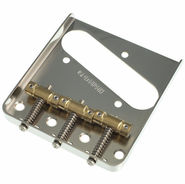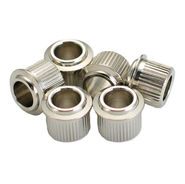FREE SHIPPING AUS WIDE OVER $99.00
Same Day
Shipping
Full
Warranty
Price
Match
Secure
Shopping
Guitar Parts Buying Guide
Whether you’re upgrading your guitar, doing a full build or replacing a worn-out part, choosing the right guitar parts is key to getting the sound, feel and look you want. This guide walks you through the most common types of guitar parts, what they do and what to look for when buying them.
TUNERS (MACHINE HEADS)
Purpose : Keep your guitar in tune.
What to look for : - Gear Ratio: Higher ratios (like 18:1) offer finer tuning.
Locking vs. Standard : Locking tuners improve tuning stability, especially with tremolos.
Mounting Style : Check your headstock hole size and screw layout.
Swapping out your tuners is one of the easiest upgrades you can make to your guitar. If the new tuning machines match the existing hole layout on your headstock, the installation can take just a few minutes with minimal tools.
Upgrading to a higher gear ratio tuner offers smoother, more accurate tuning, while locking tuners make string changes faster and improve tuning stability—especially useful if you use a tremolo system.
Beyond function, tuners can also refresh your guitar’s look, whether you’re after a vintage vibe or want to add a touch of style with a sleek chrome or gold finish.

NUTS
Purpose : Guide the strings and affect tone and playability.
Materials : - Bone: Classic tone, long-lasting - Plastic: Affordable, but can wear quickly -
Graphite : Self-lubricating, great for tuning stability
Fit Tip : Nut slots must match your string gauge and neck width.
The nut is a small but essential part of your guitar that affects everything from playability to tuning stability. It influences your string height (action), the fretboard radius, how smoothly your guitar stays in tune and even how often your strings break.
To get the best performance, choose a nut with the correct height and radius for your specific neck. Materials also matter—self-lubricating options like graphite help reduce friction, which improves tuning stability and extends string life.

BRIDGES AND TAILPIECES
Purpose : Transfer string vibrations to the body; impact sustain and tuning.
Types : - Fixed (Hardtail): Better tuning stability, easier to maintain.
Tremolo (Floyd Rose, Wilkinson, etc.) : Great for pitch bends but needs setup skills.
Check Compatibility : Make sure it matches your guitar type (Strat, LP, Tele, etc.)
The guitar bridge is often overlooked—but it plays a major role in your instrument’s tone, sustain, and overall performance. Upgrading this critical component can deliver noticeable improvements in both sound and feel.
A high-mass bridge or tailpiece can significantly increase sustain, while bridges with coated or self-lubricating saddles help extend string life by reducing friction at key contact points.
If you're after more expressive playing options, installing a tremolo system —whether it's a vintage-style trem or a modern double-locking design—can open up techniques like subtle pitch modulation, flutters, or full-on dive bombs.

ELECTRONICS
Key Parts : Potentiometers (Pots) : Control volume and tone (250k for single-coils, 500k for humbuckers).
Switches : Pickup selectors (3-way, 5-way, etc.)
Capacitors : Shape the tone roll-off; values affect treble response.
Unlock new tonal possibilities and enhance your guitar’s sound with a few simple electronics upgrades.
Swapping out your pots and capacitors can boost output, shape your tone or add vintage warmth to your signal. For an all-in-one solution, consider a pre-wired harness—it includes everything you need to streamline your upgrade.
Want to get more out of your setup? Push/pull pots offer versatile control, letting you coil-split humbuckers for single-coil tones, activate boost circuit or trigger custom mods—perfect for players who love to experiment with their sound.

PICKGUARDS & COVERS
Purpose: Protect your guitar and customize its look.
What to check: - Hole alignment for screw and pickup fit.
Material: Standard plastic or pearloid for flair.
Pickup configuration (SSS, HSS, HH, etc.)

Changing your guitar’s pickguard is one of the easiest ways to refresh its appearance and make it uniquely yours.
Beyond aesthetics, new pickguards can also provide better protection for your guitar’s finish during heavy playing. If you're upgrading pickups or electronics, swapping the pickguard at the same time can make the process easier and cleaner.
Some players also prefer pickguards with different mounting hole patterns or materials to better fit their specific guitar model or style. It’s a simple mod that offers both functional and visual benefits.
HARDWARE (SCREWS, STRAP PINS, SPRINGS
Why it matters : These small parts keep everything secure and functioning.
Tips : - Match screw thread and length
Consider locking strap pins for extra security
Check tremolo springs for tension preferences
Upgrading your guitar hardware can significantly improve playability, tuning stability and overall tone.
High-quality tuners, bridges, and saddles reduce tuning issues and increase sustain. Better components also offer smoother operation, especially with tremolo systems or locking tuners. For many players, it's a cost-effective way to bring out the full potential of their instrument without buying a new guitar.
Upgraded hardware also tends to last longer and perform more consistently under stage or studio conditions.

KNOBS & SWITCH TIPS
Purpose : Small changes that personalize your guitar and improve usability.
Look for : Correct fit (knurled or smooth shaft for knobs) - Style that suits your guitar’s look (vintage, modern, custom)
Over time, the small parts on your guitar can wear out or go missing—knobs fade, switch tips fall off, and truss rod covers get scratched. Don’t worry—we’ve got you covered. We stock a wide selection of replacement and upgrade parts to restore your guitar’s look and function, down to the finest details.
Whether you're replacing worn-out hardware or adding a personal touch, these small components make a big difference in keeping your guitar complete and stage-ready.

BONUS TIPS
Know your guitar model – parts often aren’t universal.
Measure everything – hole sizes, spacing, string gauge, etc.
Check brand compatibility – Gotoh, Wilkinson, Fender, etc. many use different specs.
Don’t forget tools! A screwdriver set, string winder, and soldering iron go a long way.














